Paradox Audio hail from Oslo in Norway and headed by Tore Magnus Wilhelmsen, founded early in the year 2010. They produce a range of cables aimed squarely at the high end of the market and the company’s tagline is “Probably the world’s most honest cables”. Dominic Marsh plumbs them into his system.
The philosophy behind that is Paradox Audio says that only the finest materials go into their cables, which directly affects the music coming out. Bold words, so let’s see if that claim is substantiated.
Three cables were submitted for review, in the shape of the Soundwave single ended RCA interconnect of 1.5 metres in length priced at US$ 1619 (£1,062), then a 1.5 metre Velocity power cable with Schuko inlet connector priced at US$ 2349 (£1,541) and lastly a 2.5 metre pair of Singularity speaker cables fitted with 4mm banana plugs priced at US$ 1549 (£1,016). All of the cables are handmade.
They appear to be second up from the bottom of the Paradox Audio range.
Construction
Sadly no construction details are given on the Paradox website for the Soundwave interconnects but I can tell you they are a flat ribbon design and fitted with the Neutrik Reen RCA plugs. Conductor material is said to be of very high purity copper with a choice of having a shield or not fitted. Being a flat ribbon design means you have to be careful when handling the cable as it is all too easy for the cable to loop over itself and kink and once kinked, an impression of the kink could be left permanently. This cable is also available in XLR balanced configuration.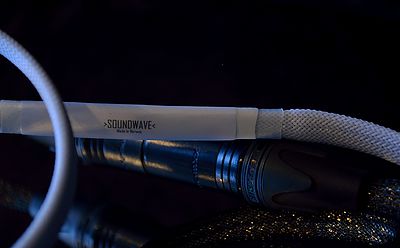
The Velocity power cable has an outer diameter of 13.4mm and is fairly flexible. Conductor material is high purity oxygen free copper with 3 conductors of 11 AWG (3 x 4mm) each with 3 layers of copper and aluminium shielding. Insulation is by way of PE and PVC layers. Connectors fitted to the review sample were an alloy bodied Schuko inlet connector and a large plastic bodied IEC connector. Power handling is said to be 89 Amps maximum, although the connectors are rated at considerably less than that figure. The outer covering is an expandable mesh sleeving, with a choice of colours available. Mains inlet plugs available for USA, Australia, UK and Schuko connections, as are high current IEC connectors.
Lastly, the Singularity speaker cable is again a flat ribbon design with an outside diameter of 11.9mm. Conductor material is said to be high purity copper and arranged in “modules”. Each one of these modules has what appears to be a range of conductors in descending order of gauge to make up 12 AWG in total. Additional modules can be added according to application.
The review sample was fitted with 4mm “Z” plugs and spade connections are also available to order.
Sound
The first cable I inserted into my resident system was the power cable and immediately I could tell this was a cable that was not shy of delivering high current. Bass became fuller and more taut, with a complete lack of boom or overhang – the benchmark of a good power cord. I particularly liked the look and feel of the alloy Schuko connector, although connection quality was no better or worse than other boutique connectors as it could be wiggled in the socket although actual connection was never lost. Next in went the interconnects, which added a small level of additional fine details over my resident cables, with the remainder of the frequencies on an equal par. Finally, the speaker cables were connected up so I now had the full ‘loom’ of Paradox cables installed. The speaker cables added a small level of refinement and better top end clarity. The collective result was very good performing; the added piquancy in the upper treble was very welcome to hear.
Time for some music to be played through the cables and into the CD drawer went my trusty test disc in the shape of Fink’s “Wheels Beneath My Feet” live album. Track one called “Biscuits For Breakfast” begins with the drummer gently striking the Ride cymbal as the intro, which has to portray the metal ringing in the cymbal to be accepted as real and any masking here shows up instantly and readily. The Paradox loom gave a good account of themselves with this test and I could find no criticisms to level at these cables. Kick drum was portrayed with good weight and solidity, a good solid rhythmic pounding of the drum with impeccable timing, bang on cue with each beat, so no cause for concerns there. Moving on to track 12 “Sort Of Revolution” we should be able to hear a clear distinctions in the change of venue ambience as each of the tracks on the album were laid down at different locations throughout one of Fink’s many European tours. This track contains a large element of audience participation, with rhythmic hand clapping that shouldn’t sound like bacon frying in a pan, catcalls and cheering from the audience should also be very clear and concise too and the Paradox cables passed this test with flying colours.
As a contrast to that and considerably more technically challenging too, I followed on with some electronic music in the shape of Tripswitch’s excellent album “Geometry”. There is some superb layering in this album and it takes a very competent set of cables to unfold and pull back all the layers so each strand is separated out and clearly defined in every respect. The bass lines really are deep on this album, rather subtle in places too and can easily be muddled by the music around it. The Paradox loom handled this task rather well, especially around the bass which has to be deep and not collide with other instruments in the mix, but once or twice did momentarily get recessed into the rest of the music, although there is no real cause for concern here as other cables in a similar class demonstrate the same trait.
Conclusion
These cables occupy an already crowded and very competitive market sector, so it is extraordinarily difficult to place them in any order of ranking amongst their contemporaries. To their credit, Paradox Audio make no claims about their cable’s performance, so in that respect they are indeed “honest cables” and so presumably they allow their target audience to discover for themselves if that is the case.
My favourite cable of the three was the power cord, in it’s ability to transfer plenty of current when needed and being overhang and boom-free in the bass registers. Speaker cables too were impressive for their fine balanced and detailed sound. For the asking price however, I felt that the interconnects deserved better quality plugs than the Neutriks fitted by Paradox and I was left wondering if better quality plugs would have made a difference in sound quality. Of course, I have made my views known to Paradox Audio.
We are talking about a high end price tag here and do the cables give a high end performance to match? Well yes they did in my resident system, but whether they perform the same in your system is an unanswered question, naturally and hand built cables are never cheap to begin with. They are fine cables nonetheless and if their price doesn’t faze you, then do put them on your audition list.
Sublime detailed sound with plenty of refinement. The power cord did impress.
Cons:
Not for those audiophiles with shallow pockets. I would expect RCA plugs better than Neutriks fitted at this price level.
Dominic Marsh


























































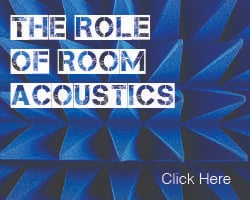












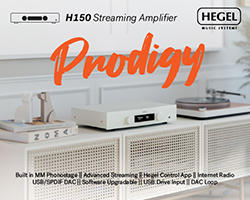










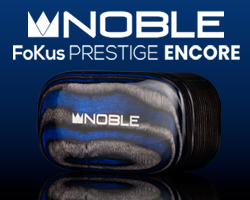
































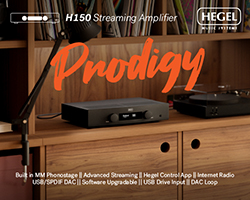




































































































You must be logged in to leave a reply.